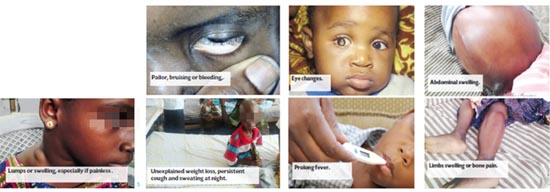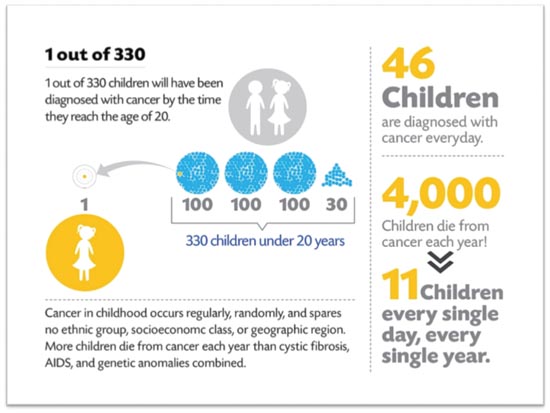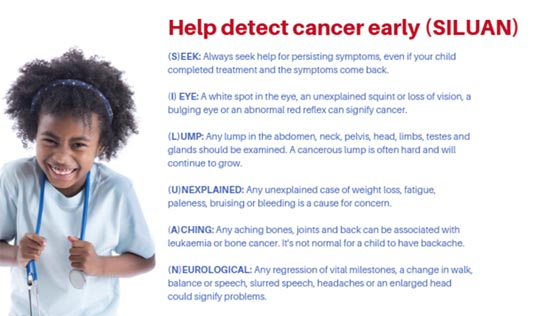
Childhood cancer - Signs to look out for
A new study has indicated that almost half of all children with cancer are not diagnosed and may die without being treated.
What is more worrying, according to the study, was that the actual number of childhood cancer cases worldwide was nearly double the recorded number.
"Our model suggests that nearly one in two children with cancer is never diagnosed and may die untreated," the study author, Zachary Ward, said.
Advertisement
He is a researcher at Harvard's T.H. Chan School of Public Health in Boston.
The study, published in The Lancet Oncology, found records of 224,000 childhood cancer diagnoses worldwide in 2015. Researchers estimated the actual number at 397,000.
The story is not different in Ghana. According to a Paediatric Oncologist of the Komfo Anokye Teaching Hospital (KATH) and the Agogo Presby Hospital (APH), Dr Lawrence Osei-Tutu, the cunning nature of childhood cancers was further complicated by the fact that many families in Ghana presented far advanced diseases to treatment centres quite late.
He observed that parents or caregivers would usually seek other complementary and alternative sources of care, such as faith-based healers, and go to
Early detection key to survival
Dr Osei-Tutu said early detection of childhood cancer was critical because it could increase the survival rate.
“The earlier the stage at diagnosis, the lower the overall treatment cost, depending on the type of cancer,” he added.

Dr Lawrence Osei-Tutu says early detection of childhood cancer is critical
According to him, it was important for parents, caregivers and medical practitioners to be aware of how the different childhood cancers presented and how to detect the symptoms early.
“When cancers are diagnosed early, it could lead to less intensive treatment and thereby reduce the financial burden on families,” he said.
Narrating a case he encountered recently, Dr Osei-Tutu said:
“In February this year, I saw a nine-year-old girl who came to us paralysed from her waist down. According to her family, they noted a painless swelling about the size of a small lemon on the left side of her neck in November last year. The swelling kept increasing in size gradually, although they were
“She was now losing weight and about a week prior to her hospital visit she had lost her ability to stand
“Our tests revealed she had a type of cancer called Burkitt Lymphoma, and following initial treatment, she is now able to walk with aid.”

What signs should I look out for?
Dr Osei-Tutu said childhood cancers are very cunning to the unsuspecting parent or medical practitioner. They usually present with symptoms of other common childhood diseases like malaria, common cold and sickle cell disease. In the early stages of the
For instance, he said, many cases of cancer of the bone in children were only diagnosed after adolescents had x-rays for routine medical examinations or for a suspected injury while playing sports.
Brain tumours in children have remained hidden because it usually starts like common migraines or tension headaches. Many of these symptoms, he said, are treated as such with over the counter medicines and pain killers till the disease advances to cause more specific symptoms like fits (or seizures), squints, persistent vomiting, abnormal body postures and walking (gait) and even strokes.
While swellings are usually obvious, in our traditional Ghanaian settings, many parents tend to self-medicate with various local alternative and complementary remedies as they deem such symptoms not to be amenable to conventional or ‘hospital’ treatments.
However, Dr Osei-Tutu notes that swelling can involve a larger body part such as a limb or the abdomen or a smaller portion of the body such as a lymph node. For instance, a type of cancer of the kidney called Wilms’ tumour is commonly noticed by parents as they hold or bath their children. They usually feel an abnormally hardened mass at either
In infants or younger children, cancer of the eye called retinoblastoma can be seen as a white patch of the usual black hole (or pupil) of the eye.
“Sometimes we can only see this when the baby’s eyes are examined at birth when a doctor shines a light in his/her eyes to check. Many times, serendipitously, when taking a photo of the baby with the flash of the camera on parents may notice a red reflex in the affected eye which may bring them to
Again, he noted that at this early stage of the disease, many families traditionally see this as harmless and only seek help when the disease advances to the stage of
Dr Osei-Tutu said fever, a very common symptom of many common infections in children including malaria may be the only early feature of leukaemia. Other symptoms include severe bone pain that usually wakes the child up at night and may be confused with acute pain episodes or crisis of sickle cell disease; unexplained weight loss and lymph node swelling. The child may also appear pale and bleed from the nose, into the urine and/or stool or into the skin (difficult to see in a dark-skinned child).

Childhood cancers in Ghana
Dr Osei-Tutu says Ghana is recording an increasing number of children below the age of 18 years diagnosed with cancer.
There is a reported 1000 to 1300 new cases diagnosed at the two major teaching hospitals annually. According to the World Health Organisation (WHO), each year, more than 300,000 children from birth to 19 years are diagnosed with cancer around the world.
There are only two ‘comprehensive’ childhood cancer treatment centres in Ghana. Both facilities see between 500 and 600 reported cases of newly diagnosed childhood cancers per year: 100 to 150 in KATH and 300 to 350 in Korle Bu Teaching Hospital (KBTH) out of an estimated 1000 to 1300 new cases. There are other hospitals across the country that treat children with cancers to some extent known as shared care centres.
Over the last five years, the childhood cancer unit at KATH has registered
The author of the new study, Ward, notes that accurate estimates are essential for setting health care
"While underdiagnosis has been acknowledged as a problem, this model provides specific estimates that have been lacking," he added.
In most regions, the number of new childhood cancer cases is declining or stable. But 92 per cent of all new cases occur in low- and middle-income countries, more than previously thought, the researchers said.
Unfortunately as Rifat Atun, a professor of global health systems observed: "Health systems in low-income and middle-income countries are clearly failing to meet the needs of children with cancer.
"Universal health coverage, a target of United Nations Sustainable Development Goals, must include cancer in children as a priority to prevent needless deaths," he added.
Writer’s email: [email protected]




